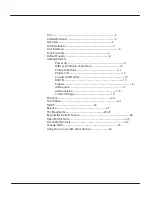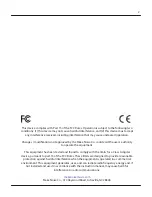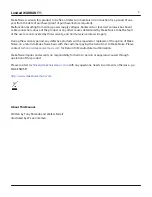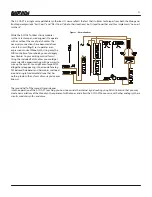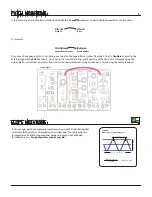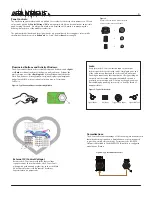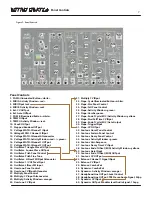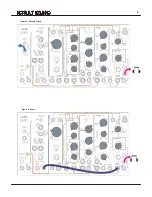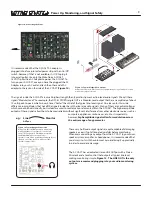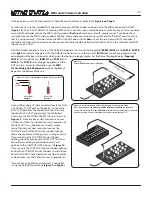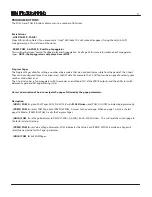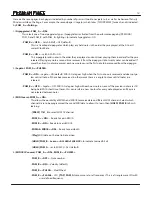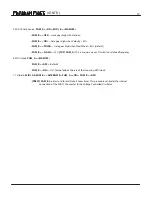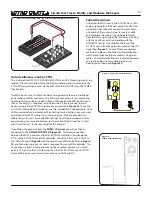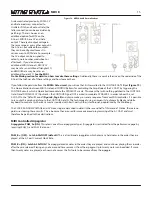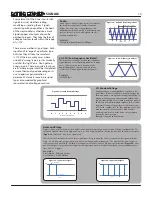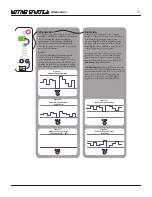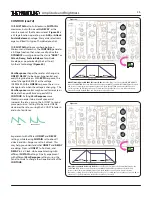
Figure 19: MIDI A and B Normalizations
MIDI B
As demonstrated previously, MIDI A CV
and Gate are always connected to
Oscillator Pitch, and Contour Gate (the
latter connection can be overridden by
patching). There is, however, an
additional option for MIDI on the
0-Coast: MIDI B has a CV and Gate
output. These jacks output voltage in
the same range as every other output in
the 0-Coast, but unlike other outputs,
they can be configured to react in
various ways to MIDI data. For example,
the CV output can be assigned to
velocity, note number, mod wheel, or
aftertouch. If you do not require
additional MIDI CHannels, MIDI B CV
may be set as an additional Triangle LFO
and MIDI B Gate may be set as an
additional Square LFO.
See the MIDI
ProGraMming section for details on how to make these settings.
Addionally, there is a quick reference on the underside of the
0-Coast that defines all of these settings and how to make them.
If you follow the gold wire from the
MIDI A Gate circuit
, you will see that it is Normalled to the CONTOUR GATE INput
(Figure 19)
.
This Normalization between MIDI A Gate and CONTOUR allows for controlling the Amplitude of the 0-COAST by triggering the
CONTOUR circuit, which is Normalled to modulate the DYNAMICS circuit. This means that with nothing patched to the CONTOUR
Gate IN and DYNAMICS CV INput Jacks, the CONTOUR Signal OUT is wired to modulate DYNAMICS. In order to hear this, set
0-COAST to the “Default Sound”
(Figure 8, Page 8)
and play some keys or send a sequence from your MIDI controller. It is possible
to re-route this wire by patching to the CONTOUR Gate IN. The technique of using an organ-style, chromatic black and white
keyboard to control a synthesizer is most associated with East Coast synthesis techniques, popularized by the MiniMoog.
The CLOCK, RANDOM VOLTAGE, and CV Processing are described in detail in the second half of this manual. Notice, there are no
gold wires leaving these circuits. This is because they are used for more advanced programming of the 0-COAST and must
therefore be patched to their destinations.
MIDI Controlled Arpegiator
Arpeggiator: PGM_A=[ON]-
This selects one of two arpeggiator types. (Arpeggiator is activated from the performance page by
{pressing] PGM_A and PGM_B at once.)
PGM_B = [OFF]
–
Latch & Shift OFF (default)
. This is a traditional arpeggiator, which plays any held notes in the order they are
played, at the 0-Coast's current Clock Rate.
PGM_B =[ON] – Latch & Shift ON.
This arpeggiator adds notes in the order they are played, and continues playing them in order
after they are released. Playing any note a second time removes it from the arpeggio. Up to twenty notes can be added. If more
than twenty notes are played, each new note causes the first note to be removed from the arpeggio.
15
Содержание 0-Coast
Страница 1: ...5 19 16 REV 7 v 1 16...
Страница 9: ...8 Figure 8 Default Sound Figure 9 Drone...

